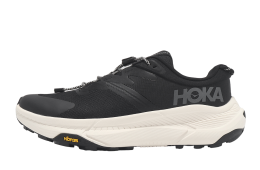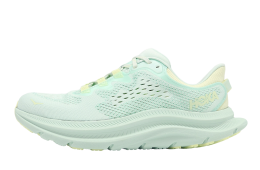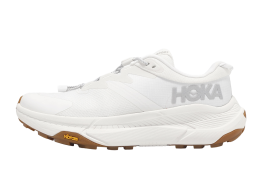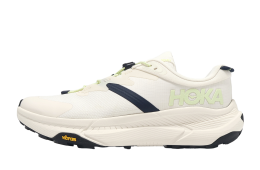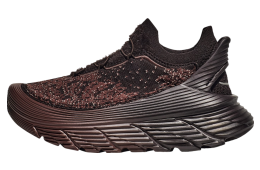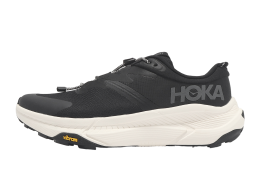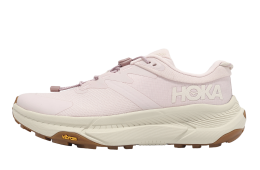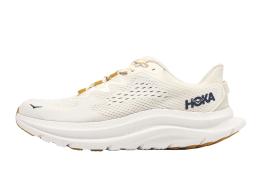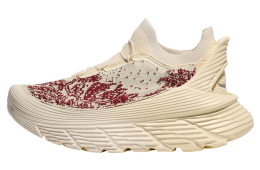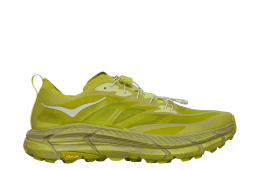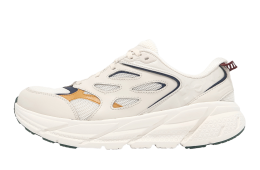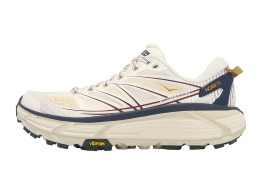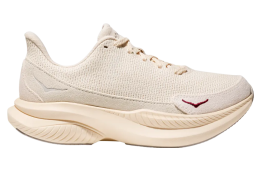Hoka
Hoka One One, commonly known as Hoka, has gained prominence in the footwear industry for its distinctive approach to running and athletic shoes. What sets Hoka apart is its emphasis on maximalist cushioning, which aims to provide superior comfort and support while minimizing the impact on joints during running and other athletic activities. This is achieved through the use of oversized midsoles that offer generous cushioning without compromising on weight, allowing runners to experience a plush, responsive ride.
Central to Hoka's design philosophy is the Meta-Rocker technology, featured in many of its models. This innovative midsole geometry promotes a smooth, rolling motion from heel strike to toe-off, enhancing the efficiency of each stride and reducing fatigue over long distances. Coupled with an active foot frame that cradles the foot securely, Hoka shoes provide stability and support that adapts to the natural movement of the foot, whether on the road or trail.
read moreHistory of Hoka
The History of Hoka
Origins and Founding
Hoka One One, commonly referred to as simply "Hoka," was founded in 2009 by two retired gravity sports enthusiasts—Nicolas Mermoud and Jean-Luc Diard. These two visionaries were former employees at Salomon, a trail running giant known for its innovative approach to footwear. Their extensive experience in outdoor sports and the footwear industry inspired them to create something unique within the running world.The term "Hoka One One" is derived from the Maori language, translating to "fly over the earth." This phrase perfectly encapsulated their mission: to create shoes that would make runners feel like they were gliding effortlessly over the ground. While most brands focused on minimalism during the 2000s, Hoka contrarily aimed at maximizing cushioning and stability.
The Big Idea
Nicolas Mermoud and Jean-Luc Diard noticed a gap in the running shoe market. Traditional shoes at the time emphasized lightness and minimalism, which they felt compromised the comfort and performance for many athletes. They theorized that increasing the cushioning and using advanced materials could substantially improve running efficiency and comfort.This led to the development of the concept of "maximalist" shoes. They engineered a shoe with an oversized midsole to offer greater cushioning and a pronounced rocker profile to aid in smoother transitions during running. This design would ultimately reduce the impact force and enable runners to go farther without the typical wear and tear on the body.
Initial Struggles
When the first prototype came out, it looked unlike any running shoe on the market. The oversized midsole earned it the nickname “moon shoe” within the running community. Its appearance initially sparked skepticism among athletes and industry professionals. Many wondered if the shoe was feasible for long-distance running or if it would be too cumbersome.The early models were tested rigorously by athletes and received significant wins at prominent races. Despite these early victories, gaining widespread acceptance was an uphill battle. Running stores were hesitant to stock such an unconventional product. It was a breakthrough at races like the Ultra-Trail du Mont-Blanc (UTMB) that provided the brand with critical visibility.
Breaking Into the Market
Hoka's perseverance paid off as professional ultra-runners started to endorse the shoes after seeing demonstrable improvements in their performance and recovery times. In particular, endorsements from popular ultra-endurance athletes, who vouched for the shoe's ability to maintain comfort over incredibly long distances, played a pivotal role in its acceptance.Moreover, the efficiency of the rocker design helped runners maintain speed and reduce fatigue, translating to better race outcomes. As positive reviews began to pour in, skepticism started turning into curiosity, and curiosity turned into purchases.
Expansion and Diversification
By 2013, Hoka had begun to make waves in the running community, earning a cult-like following among ultra-runners and trail enthusiasts. Recognizing the commercial potential, Deckers Brands—a global leader in designing, marketing, and distributing innovative footwear, apparel, and accessories—acquired Hoka in the same year. This acquisition provided Hoka with the financial backing and distribution channels needed to expand its product line.Hoka's focus went beyond just performance shoes for elite athletes. They recognized the importance of creating a versatile range of shoes that catered to diverse consumer needs. This led to the introduction of several models tailored for different running styles, including road running, trail running, and gym workouts. Shoes like the Bondi, Clifton, and Speedgoat became iconic models, each designed with specific functionalities to address distinct running demands.
Innovations and Technological Advances
Hoka's success came from their continuous pursuit of innovation. Their Research and Development (R&D) team constantly experimented with new materials, designs, and technologies. They were among the first to employ advanced foam materials like EVA (Ethylene Vinyl Acetate) in their midsoles, which provided excellent shock absorption while maintaining lightness.Moreover, Hoka placed a strong emphasis on biomechanical research. The pronounced rocker profile, termed the "Meta-Rocker," was continually refined to ensure that each stride was as efficient as possible. With varying degrees of cushioning, stability features, and outsole patterns, each new model sought to perfect the balance between comfort and performance.
Sales and Marketing Strategy
A significant component of Hoka's rise to prominence was its marketing strategy. They utilized a grassroots approach initially by sponsoring ultra-marathon events and elite runners. This strategy built credibility within the running community, showcasing real-world performance rather than relying solely on traditional advertising methods.As their consumer base expanded, so did their marketing efforts. Collaborations with influencers, partnerships with retail chains, and strategic social media campaigns played crucial roles in broadening their reach. They emphasized community engagement, storytelling, and authentic athlete experiences to create a brand narrative that resonated with a wide range of runners.
Community and Social Impact
Hoka also emphasized developing a supportive community around its brand. Their sponsorship of events wasn't just limited to elite races; they also sponsored community races, local events, and charity runs. Recognizing that running was as much about community as it was about competition, Hoka invested in initiatives that promoted inclusivity and accessibility in the sport.Moreover, Hoka has been actively involved in sustainability and social responsibility efforts. This includes using environmentally friendly materials in production, ensuring ethical labor practices in their supply chains, and engaging in philanthropic initiatives. Their partnerships with organizations promoting trail conservation and their participation in global movements like Earth Day underline their commitment to social impact.
Becoming Mainstream
The 2010s saw Hoka transitioning from a niche brand primarily adored by ultra-runners into a mainstream favorite. Numerous athletic retailers started stocking Hoka shoes, and the brand gained traction among recreational runners, gym-goers, and even those seeking comfortable walking shoes. Their success wasn’t limited to North America; they made significant inroads in Europe, Asia, and other markets globally.Their entry into mainstream culture was marked by strategic collaborations with well-known apparel brands and designers. These collaborations brought Hoka's maximalist design ethos into the casual footwear realm, broadening its appeal beyond just performance athletes.
Future Prospects and Continued Innovation
As of today, Hoka stands as one of the most prominent names in the athletic footwear industry. Yet, the brand shows no intention of resting on its laurels. Continued investment in R&D ensures that each new model tries to set a new standard for comfort, efficiency, and sustainability.Their upcoming lines forecast the use of even more advanced materials that promise better performance with minimal environmental impact. Innovations like carbon plate technology, which were first seen in road racing shoes, are being adapted for broader use cases, including trail and mountain running.
Moreover, Hoka is expanding its product range to include more lifestyle-oriented sneakers, appealing to a broader consumer base who appreciate the brand's emphasis on comfort and quality, even in everyday settings.
Relevance Amid Evolving Trends
The running shoe industry continues to evolve with new trends, technologies, and consumer demands. Minimalist designs, once thought to negate the maximalist approach, are witnessing a renaissance in a combined format where shoes offer both lightweight attributes and sufficient cushioning. Hoka remains relevant by continuously adapting and innovating to meet these changing needs.Their focus on data-driven design and consumer feedback ensures they remain at the forefront of technology and trends. Whether through enhanced cushioning systems, more stable support structures, or the innovative use of materials, Hoka's commitment to pushing boundaries positions them well for future growth.
Conclusion
The story of Hoka is a remarkable case study in innovation, market adaptation, and consumer-centric design. From its revolutionary approach to cushioning and support to its adaptive marketing and community engagement strategies, Hoka has managed to carve out a significant niche in an extremely competitive market. Their journey, marked by a relentless pursuit of improvement and a keen understanding of the needs of their consumers, underscores the brand's commitment to making running a more enjoyable and accessible experience for everyone.As Hoka continues to innovate and expand, its foundational philosophy—providing unparalleled comfort and performance—remains unchanged. This ethos, combined with their ability to anticipate and respond to market trends, ensures that Hoka is well-positioned to continue "flying over the earth" for many years to come.

